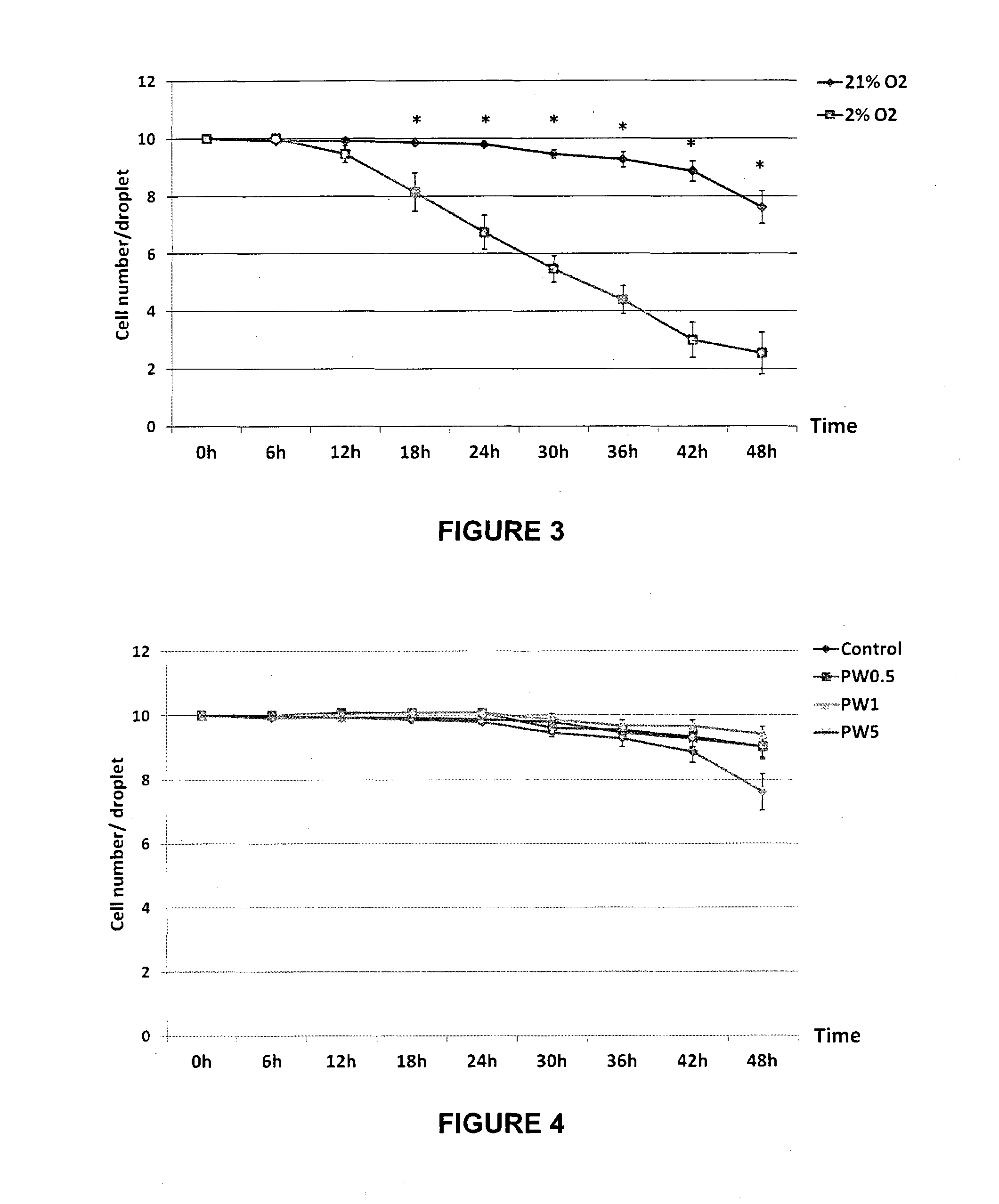Method of identifying, isolating and/or culturing foetal erythroblasts
a technology of erythroblasts and erythroblasts, which is applied in the field of identifying, isolating and/or culturing at least one foetal erythroblast, can solve the problems of insufficient cell-free dna in the maternal circulation to provide complete chromosomal information, insufficient and very few cell numbers, etc., to achieve high cytoplasmic to nuclear ratio ratio
- Summary
- Abstract
- Description
- Claims
- Application Information
AI Technical Summary
Benefits of technology
Problems solved by technology
Method used
Image
Examples
example 1
Method of Selecting, Picking and Isolating Each Individual hPFE
[0122]During the cell picking process, a few criteria were followed to help identify the hPFEs from the mass population of adult RBCs and other nucleated cell types. These criteria were developed based on studies done on hPFEs isolated from placental tissues at gestations of 8-10 weeks. They were: 1) hPFEs have an average diameter of 15-16 μm, which is about twice of diameter of RBCs; 2) hPFEs are nucleated cells, so they can be distinguished from RBCs based on nuclear staining; 3) hPFEs are CD45 negative. A one step immunostaining with anti-CD45 FITC can be used to exclude CD45 positive white blood cells which constitute most of the contaminating nucleated cells; 4) hPFEs are non-adherent cells with smooth non-sticking cell surface; 5) are quite malleable during cell aspiration into the micropipette; 6) hPFEs have a high cytoplasmic-to-nuclear ratio (by area) ranging from 16:1 to 9:1, due to their highly condensed nucle...
PUM
| Property | Measurement | Unit |
|---|---|---|
| cell diameter | aaaaa | aaaaa |
| of time | aaaaa | aaaaa |
| diameter | aaaaa | aaaaa |
Abstract
Description
Claims
Application Information
 Login to View More
Login to View More - R&D
- Intellectual Property
- Life Sciences
- Materials
- Tech Scout
- Unparalleled Data Quality
- Higher Quality Content
- 60% Fewer Hallucinations
Browse by: Latest US Patents, China's latest patents, Technical Efficacy Thesaurus, Application Domain, Technology Topic, Popular Technical Reports.
© 2025 PatSnap. All rights reserved.Legal|Privacy policy|Modern Slavery Act Transparency Statement|Sitemap|About US| Contact US: help@patsnap.com



